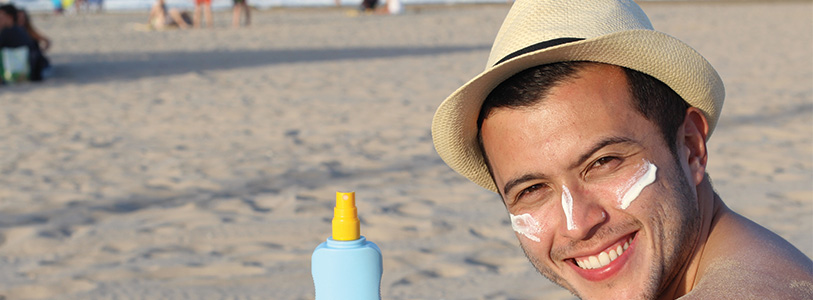Sun Protection for Men

Melanoma, a dangerous form of skin cancer that causes 86 percent of cases through exposure to the sun’s ultraviolet rays, affects men at disproportionately higher rates than it does women.
More articles from this issue
This year alone, more than 55,000 men will be diagnosed with melanoma, compared with approximately 36,000 women. Men younger than age 50 have a higher chance of developing melanoma than they do any other type of cancer.
“A few factors play into the higher occurrence of melanoma in men,” says Dr. Stephen Danziger, Chief of Dermatology at NewYork-Presbyterian Brooklyn Methodist Hospital. “Men tend to work outdoors more than women, which exposes them to the sun’s harmful effects more frequently. Men also tend to visit their doctors less often than women.”
Fewer visits to a primary care doctor or dermatologist mean fewer opportunities to check potential problem spots on the skin. Men may be less informed about skin cancer, including the increased risk of developing melanoma from tanning bed usage and that intermittent sunlight exposure may cause cancer to develop on the skin.
Cover your bases
One of the best ways to prevent melanoma is using a broad-spectrum sunscreen with a sun protection factor (SPF) of at least 30 to protect the skin.
“Sunscreen protects against the sun’s rays, but men often don’t use it,” Dr. Danziger says. “In addition to wearing sunscreen, we suggest men cover up with long pants and shirt sleeves and, if possible, avoid sun exposure in the middle of the day when it is most damaging.”
Take skin cancer seriously
Melanoma typically appears as unusual moles, bumps, or blemishes that grow or change shape and color. While melanoma is the deadliest of skin cancers, it does not occur as frequently as other forms like basal cell carcinoma (BCC) and squamous cell carcinoma. BCC is the most common form of skin cancer, with approximately 4.3 million new cases diagnosed each year.
“Even one bad sunburn during childhood can predispose you to skin cancer later in life,” Dr. Danzinger says. “Burns cause damage to the skin cells and genetic material.”
Dr. Danziger recommends people talk with their primary care doctors or dermatologists about their personal skin cancer risk and to have suspicious areas of skin examined. He also recommends a monthly self-examination to keep an eye on any new or growing spots.
“Ask a family member or friend to help you look for any moles that have changed shape or color, as they can appear on places that are hard to see — like the back,” Dr. Danziger says.
To find a physician at NewYork-Presbyterian Brooklyn Methodist Hospital, please call 718-499-2273 or visit nyp.org/brooklyn.






